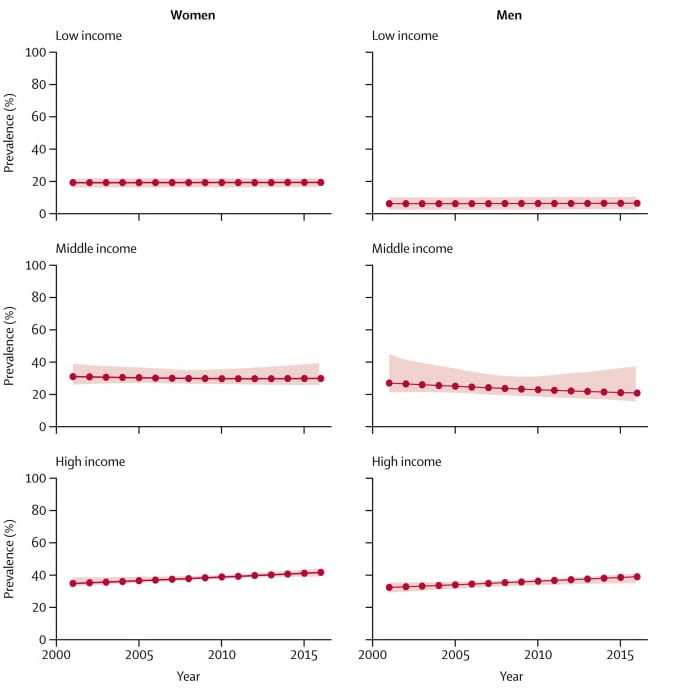More than 1 in 4 adults are not getting enough exercise
Starbit has always worked for people and their quality of life: intellectual, physical, economic.
With WalkyFit offers everyone the advantage of the care of their wellness combined with the economic recognition of a plurality of third parties. An innovative model that makes more positive the care of your health ...
As always, Starbit is ahead ...


With WalkyFit offers everyone the advantage of the care of their wellness combined with the economic recognition of a plurality of third parties. An innovative model that makes more positive the care of your health ...
As always, Starbit is ahead ...
More than 1 in 4 adults are not getting enough exercise

And
there's been no improvement since 2001. Image:
REUTERS/Chris Wattie
More than a quarter of
the world's adults - or 1.4 billion people - take
too little exercise, putting them at higher risk of
cardiovascular disease, type 2 diabetes, dementia
and cancers, according to a World Health
Organization-led study.
In
2016, around one in three women and one in four men
worldwide were not reaching the recommended levels of
physical activity to stay healthy – at least 150
minutes of moderate, or 75 minutes of vigorous
exercise a week.
There
has been no improvement in global levels of physical
activity since 2001, according to the study, which was
conducted by World Health Organization (WHO)
researchers and published on Tuesday in The Lancet
Global Health journal.
The
highest rates of lack of exercise in 2016 were in
adults in Kuwait, American Samoa, Saudi Arabia and
Iraq, where more than half of all adults were not
active enough to protect their health.
By
comparison, around 40 percent of adults in the United
States, 36 percent in Britain and 14 percent in China
did too little exercise to stay healthy.
"Unlike
other major global health risks, levels of
insufficient physical activity are not falling
worldwide, on average, and over a quarter of all
adults are not reaching the recommended levels of
physical activity for good health," said Regina
Guthold of the WHO, who co-led the research.

Image:
The Lancet
The
WHO says insufficient physical activity is one of the
leading risk factors for premature death worldwide. It
raises the risk of noncommunicable diseases (NCDs)
such as cardiovascular disease, cancer and diabetes.
By
becoming more active, it says, people can easily
achieve benefits such as improve muscular and
cardio-respiratory fitness, better bone health, weight
control and reduced risk of hypertension, heart
disease, stroke, diabetes, depression and various
types of cancer.
The
study found that levels of low physical activity were
more than twice as great in high-income countries
compared to poorer nations, and had increased by 5.0
percent in richer countries from 2001 to 2016.
In
wealthier countries, the researchers said, a
transition towards more sedentary jobs as well as
sedentary forms of recreation and transport could
explain higher levels of inactivity. In less
well-off countries, people tend to be more active at
work and for transport, they said.
They
urged governments to take note of these changes and
put in place infrastructures that promote walking
and cycling for transport and active sports and
recreation.

Commenti
Posta un commento